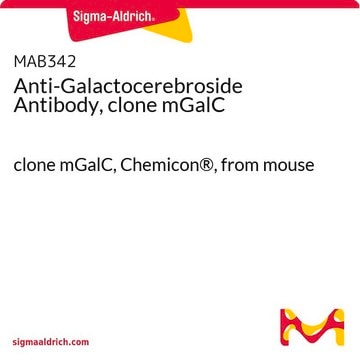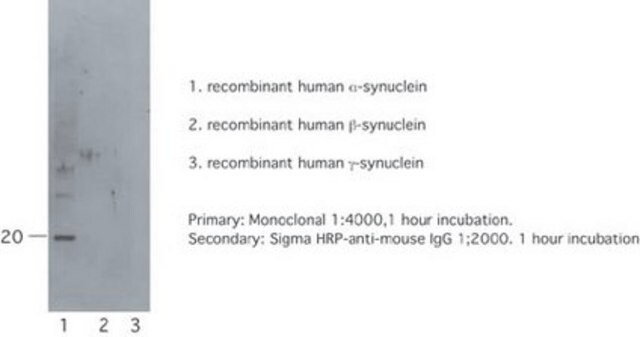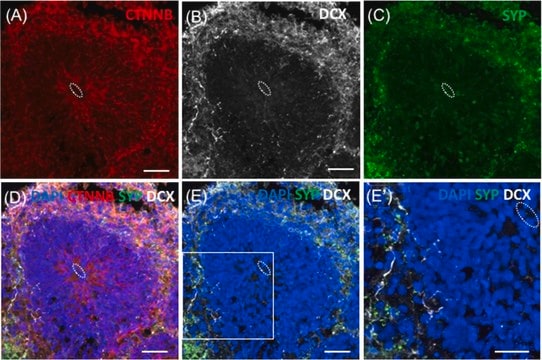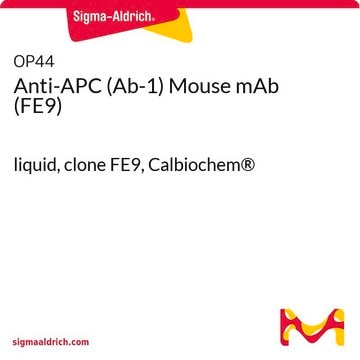AB5320
Anti-NG2 Chondroitin Sulfate Proteoglycan Antibody
Chemicon®, from rabbit
Synonym(s):
Chondroitin sulfate proteoglycan NG2, Melanoma chondroitin sulfate proteoglycan 3, Melanoma-associated chondroitin sulfate proteoglycan, chondroitin sulfate proteoglycan 4, chondroitin sulfate proteoglycan 4 (melanoma-associated)
About This Item
Recommended Products
biological source
rabbit
Quality Level
antibody form
purified antibody
antibody product type
primary antibodies
clone
polyclonal
purified by
affinity chromatography
species reactivity
rat, mouse, monkey, human
manufacturer/tradename
Chemicon®
technique(s)
ELISA: suitable
immunocytochemistry: suitable
immunohistochemistry: suitable
immunoprecipitation (IP): suitable
western blot: suitable
NCBI accession no.
UniProt accession no.
shipped in
dry ice
target post-translational modification
unmodified
Gene Information
human ... CSPG4(1464)
mouse ... Cspg4(121021)
rat ... Cspg4(81651)
rhesus monkey ... Cspg4(713086)
General description
Specificity
Immunogen
Application
A 1:150-1:600 dilution of a previous lot was used in IC.
Immunohistochemistry:
1:200 dilution of a previous lot was used on frozen sections of embryonic mouse brain using an Alexa Fluor conjugated secondary antibody. Care should be taken to avoid overfixing tissue sections. A short (5-10 minute) fix in 2-4% PFA is recommended.
Immunoprecipitation:
2 μg/mL concentration of a previous lot was used in IP.
ELISA:
A 1:1,500-1:3,000 dilution of a previous lot was used in ELISA.
Optimal working dilutions and protocols must be determined by end user
Neuroscience
Neuronal & Glial Markers
Quality
Western Blot: 1:1000 dilution of this lot detected NG2 chondroitin sulfate on 10 μg of rat brain lysates.
Target description
Physical form
Storage and Stability
Handling Recommendations:
Upon receipt, and prior to removing the cap, centrifuge the vial and gently mix the solution. Aliquot into microcentrifuge tubes and store at -20°C. Avoid repeated freeze/thaw cycles, which may damage IgG and affect product performance.
Analysis Note
Human melanoma, glioma and proliferating brain endothelial cells, rat B49 glial cell extracts or embryonic mouse brain tissue.
Other Notes
Legal Information
Disclaimer
Not finding the right product?
Try our Product Selector Tool.
recommended
Storage Class Code
12 - Non Combustible Liquids
WGK
WGK 2
Flash Point(F)
Not applicable
Flash Point(C)
Not applicable
Certificates of Analysis (COA)
Search for Certificates of Analysis (COA) by entering the products Lot/Batch Number. Lot and Batch Numbers can be found on a product’s label following the words ‘Lot’ or ‘Batch’.
Already Own This Product?
Find documentation for the products that you have recently purchased in the Document Library.
Customers Also Viewed
Our team of scientists has experience in all areas of research including Life Science, Material Science, Chemical Synthesis, Chromatography, Analytical and many others.
Contact Technical Service















